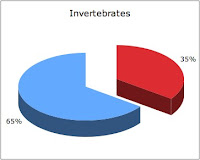
The first thing I learned about this tree dwelling tarantula, was that it has to be seen to be believed. When I saw a picture, I understood why. The rare beauty of this spider's color may be its salvation or its doom.
Native to a tiny, tiny, tiny, patch of India, this entire species occupies less than 100 km squared--and that's a generous estimate. Sounds big, but look at this map, and you'll see just how tiny it is.
With it's habitat being degraded as humans cut trees for timber and firewood, it's up for debate whether the smugglers who have spirited some of these spiders out of the country will ultimately help the spiders or cause their demise.
Coveted among spider and insect collectors and hobbyists for their colour, these spiders are being bred in captivity by specialist pet shops. A young Sapphire Gooty spiderling can fetch more than US$150. Although they are fairly rare right now, as hobbyists continue to breed them, they may become more common.
I don't generally support taking wild animals out of their native habitat for use as pets, but perhaps this time it might save them, or at least ensure that some remain if they can no longer survive in the wild.
What do you think? Is this biopiracy or conservation in disguise?




















